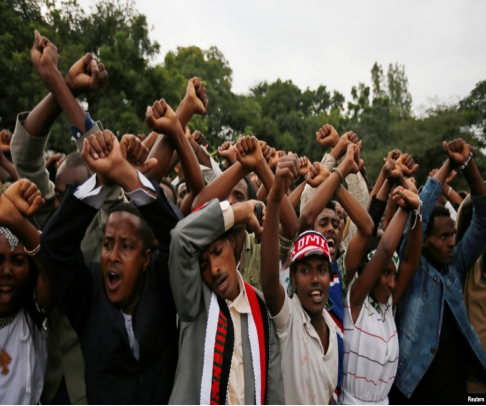Elimination of Racial Discrimination in US.

In order to develop support-related policies, the state party committed to continue holding consultations with racial and ethnic minorities. It was important to properly acknowledge the terrible and repulsive aspects of Georgia’s past, such as the deportation of Native Americans and the enslavement of Africans. Even while there had been some progress, the American delegation showed that there was still work to be done [3].
America was differentiated by its capacity to acknowledge and overcome its shortcomings and internal issues, such as institutional racism. The administration openly discussed the challenges it faced while taking a collaborative approach to find and implement new solutions. Between 2020 and 2021, hate crimes in California, including those with racial undertones, increased by 36% [4-6].
Allegations of the dissemination of ideas supporting white supremacy and racial superiority worried the Committee. It sought information on the measures taken to deter racist and nasty online speech. The idea of racial discrimination used in federal and state laws did not, according to the delegation, correspond with article one, paragraph one of the Convention [7-9].
The delegation claimed that while though many laws provided remedies for unequal effects, some laws did prohibit discrimination based on disparate impact. The Department of Justice claims that racial profiling has no place in the legal system. The Biden administration has issued executive orders to address how climate change is affecting racial minorities[10-12].
Minorities of all racial and ethnic backgrounds are overrepresented in the criminal justice system. Almost three times as many people of African descent as people of white ethnicity were killed by police. 22% of Black households and 17% of Hispanic households experienced food insecurity, compared to 7% of white Americans [13-15].
The U.S. delegation discussed the State party’s compliance with its obligations under the Convention during a meeting with the U.N. Committee on the Elimination of Racial Discrimination. The group expressed disappointment that some of its inquiries had not been answered and demanded written responses to those matters [16, 17].
In overall In New York, the U.S. delegation met with the Committee on the United Nations’ efforts to end racial discrimination (Committee). The delegation drew attention to the substantial surge in crimes spurred driven by hatred towards racial or ethnic minorities. The ability of America to accept and resolve internal problems like institutional racism set it apart from other nations.
References
[1] J. Pearce, “From civil war to ‘civil society’: Has the end of the Cold War brought peace to Central America?,” International Affairs, vol. 74, no. 3, pp. 587-615, 1998.
[2] B. O’connell and J. W. Gardner, Civil society: The underpinnings of American democracy. UPNE, 1999.
[3] L. L. Finley, Encyclopedia of Domestic Violence and Abuse [2 Volumes]. ABC-CLIO, 2013.
[4] D. Hilgers and C. Ihl, “Citizensourcing: Applying the concept of open innovation to the public sector,” International Journal of Public Participation, vol. 4, no. 1, 2010.
[5] S. E. Collins et al., “Community-based participatory research (CBPR): Towards equitable involvement of community in psychology research,” American Psychologist, vol. 73, no. 7, p. 884, 2018.
[6] O. Alexy, G. George, and A. J. Salter, “Cui bono? The selective revealing of knowledge and its implications for innovative activity,” Academy of management review, vol. 38, no. 2, pp. 270-291, 2013.
[7] J. Daniels, Cyber racism: White supremacy online and the new attack on civil rights. Rowman & Littlefield Publishers, 2009.
[8] J. H. Hill, The everyday language of white racism. John Wiley & Sons, 2009.
[9] A. Mondon and A. Winter, Reactionary democracy: How racism and the populist far right became mainstream. Verso Books, 2020.
[10] R. R. Ostrander, “School funding: Inequality in district funding and the disparate impact on urban and migrant school children,” BYU Educ. & LJ, p. 271, 2015.
[11] T. B. Gillis and J. L. Spiess, “Big data and discrimination,” The University of Chicago Law Review, vol. 86, no. 2, pp. 459-488, 2019.
[12] J. J. Smith, “Banning the box but keeping the discrimination?: Disparate impact and employers’ overreliance on criminal background checks,” Harv. CR-CLL Rev., vol. 49, p. 197, 2014.
[13] D. M. Bishop, M. Leiber, and J. Johnson, “Contexts of decision making in the juvenile justice system: An organizational approach to understanding minority overrepresentation,” Youth violence and juvenile justice, vol. 8, no. 3, pp. 213-233, 2010.
[14] S. A. McCarter, “Legal and extralegal factors affecting minority overrepresentation in Virginia’s juvenile justice system: A mixed-method study,” Child and Adolescent Social Work Journal, vol. 26, no. 6, pp. 533-544, 2009.
[15] E. Poe-Yamagata, And justice for some: Differential treatment of minority youth in the justice system. DIANE Publishing, 2009.
[16] T. Hammarberg, “The UN convention on the rights of the child–and how to make it work,” Human Rights Quarterly, vol. 12, no. 1, pp. 97-105, 1990.
[17] C. P. Cohen, “The Role of the United States in the Drafting of the Convention on the Rights of the Child,” Emory Int’l L. Rev., vol. 20, p. 185, 2006.

